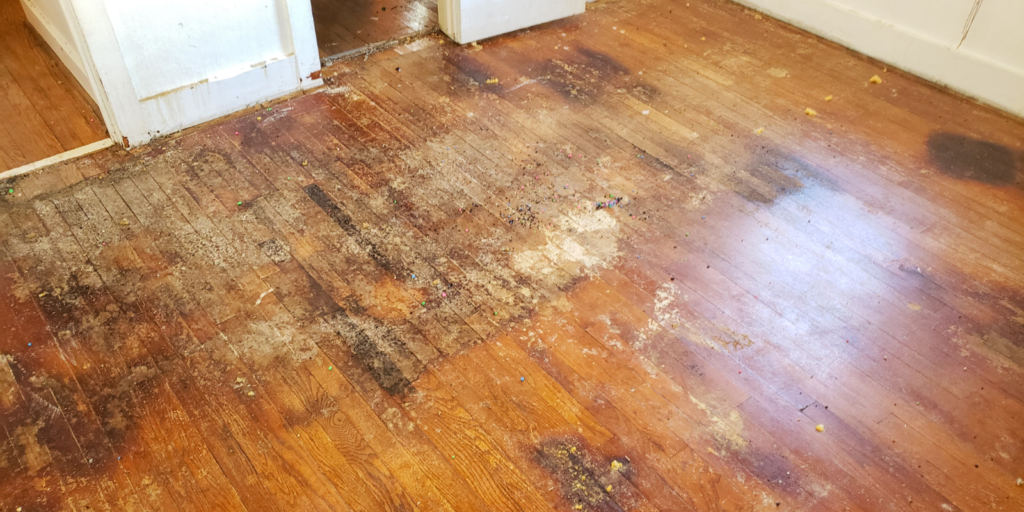Floor water damage may be a property owner’s worst worry. If you do not repair it, it may cost quite a lot of cash or even be risky for your health. If you don’t catch water damage early, it may do numerous damage on your floors and subfloors, whether it’s from a flood, a leaky pipe, or maybe just a constant drip. There are 19 symptoms to look out for while you suppose your floor has water damage, and this guide will display you what to do to restore the hassle.
Understanding Floor Water Damage
Floor water damage happens whilst too much water gets into the flooring material and weakens it, which can cause shape troubles. It can damage specific forms of floors, like carpet, hardwood, concrete, and tile. Finding water damage quickly is vital to stop it from getting worse and stopping mold from developing.
Signs of Floor Water Damage
Warped or Buckling Flooring
It’s smooth to inform if there’s floor water damage whilst the forums or tiles begin to bow or damage. This happens whilst water gets into the cloth and makes it swell and distort.
Discoloration
Water harm might be proven with the aid of stains or dark spots at the floor or alongside the rims of the partitions. Most of the time, these spots are caused by water pooling beneath the flooring.
Musty Odor
There can be water harm in the room if it smells musty or moldy for a long time. Mold grows satisfactory in wet locations, so if you odor something horrific, you need to inspect it similarly.
Sagging or Soft Spots
If you walk across your floor and sense areas which can be smooth or sinking, that would mean that water harm has come about. Especially in places with wooden floors, this occurs plenty.
Expansion Gaps
If you have got wooden or laminate floors that receive wet, the gaps between the boards can also get bigger. Keep an eye on those holes because they might mean there are water problems deeper down.
Peeling or Bubbling
It is possible for laminate or vinyl floors to peel or bubble if water gets caught under the floor. If you see those signs and symptoms, you need to take action right away to prevent the floor water damage from getting worse.
Cupping
When moisture receives into the rims of wooden forums, they curl up. This is referred to as cupping. Inequality within the floor and damage to the ground’s shape can result from this.
Cracks or Fissures
Tiles can crack or get fissures because of water harm, particularly in locations wherein the floor has been damaged by way of water.
Efflorescence
Efflorescence, a white, powdery residue, may additionally display up on the surface of homes with concrete floors whilst water disappears and metals are left behind. This will be a sign of ongoing moisture issues.
Mold Growth
Mold increase that may be visible on the floor or alongside the stairs and walls is a clean signal of floor water damage.Mold grows fine in damp locations, and in case you don’t do away with it, it may be very awful in your fitness.
Increased Utility Bills
If your water or energy payments move up all of a sudden without you using more, it could mean that there is a hidden water leak that is inflicting damage on your floors.
Water Stains on Walls or Ceilings
Even though they aren’t without delay related to floors, water stains on close by walls or ceilings can suggest that there is a leak that has reached the floors.
Damaged Baseboards or Moldings
Baseboards and trims are regularly the primary matters that get broken via water. They can warp, swell, or change shade.
Rusty Nails or Screws
If you see rust on the nails or screws to your floor, it can imply that they have been moist for a long time.
Pooled Water
When water swimming pools at the floor, in particular in wet places like toilets or kitchens, there is a leak or a problem with the pipes.
Crunching Sound
If you stroll throughout the ground and pay attention to a crunching or squishing sound, it can imply that water has gotten into the subfloor or base.
Dampness or Moisture
If you experience wetness or dampness beneath your feet, specifically in locations it should not be, it is able to imply that water is entering into.
Visible Mold or Mildew
Check for mold or mildew boom not simplest at the floor, but additionally in places which are hard to get to, like beneath flooring or in the back of baseboards.
Warping of Wooden Subfloors
If your subfloor is made of wood, search for symptoms of warping or twisting. This may mean that water is moving from under.
Steps To Take When You Suspect Floor Water Damage
Identify the Source
Find out where the water is coming from, like a leaky pipe, a broken roof, or a flood. Getting to the foundation of the problem is necessary to prevent it from getting worse.
Document the Damage
To get coverage, take snapshots or movies of the broken locations. Keeping records of ways horrific the damage is will help you declare and make the repair manner go more easily.
Remove Standing Water
If water is sitting on the ground, quickly smooth it up with a moist vacuum or mop. Damage can worsen and mold can develop in standing water.
Dry Out the Area
You can assist the place dry out by the usage of enthusiasts, dehumidifiers, and open windows. To prevent mildew growth and greater damage to the structure, it’s vital to have sufficient air go with the flow.
Inspect Subfloors and Underlayment
If you could, search for symptoms of water harm in the subfloors and floors. Take care of any problems and the proper way to stop the mattress from getting worse.
Disinfect and Clean
Clean and disinfect the affected regions properly to put off mold germs and prevent them from developing again. When working with mold, ensure you use the right cleaning merchandise and protection equipment.
Repair or Replace Damaged Flooring
Fix or update the broken flooring cloth, relying on how bad the harm is. For expert records and assistance, communicate to a professional contractor.
Address Plumbing Issues
The water damage might be resulting from a plumbing hassle, like a pipe that is leaking or an object that is not operating right. Fix or update the damaged components as wanted.
Seal Gaps and Cracks
Fill in any holes or cracks inside the floors to keep water out within the future. For a robust, watertight seal, use the proper sealants or caulking goods.
Monitor for Recurrence
Watch for signs and symptoms of return on the floors that changed into constant or changed. Check the area often for brand new water harm or mold boom, and attach any issues right away.
It is viable to lower the dangers and costs of water harm by using **knowing the way to spot floor water damage and acting quickly to restore it. Remember to test your flooring for signs of water damage on a daily foundation and fix any problems right away to shield your house and ensure your floors last as long as feasible.
Not letting ground water harm appear is very crucial. You can defend your flooring from water damage and keep your home searching first-class for years to come by keeping up with your pipes, solving leaks properly, and ensuring there’s sufficient air glide and drainage.
If you suspect there’s floor water damage, do not wait—act now to defend your house and the fitness of your circle of relatives. If you are cautious and do ordinary repairs, you may keep your flooring looking notable and working well.


